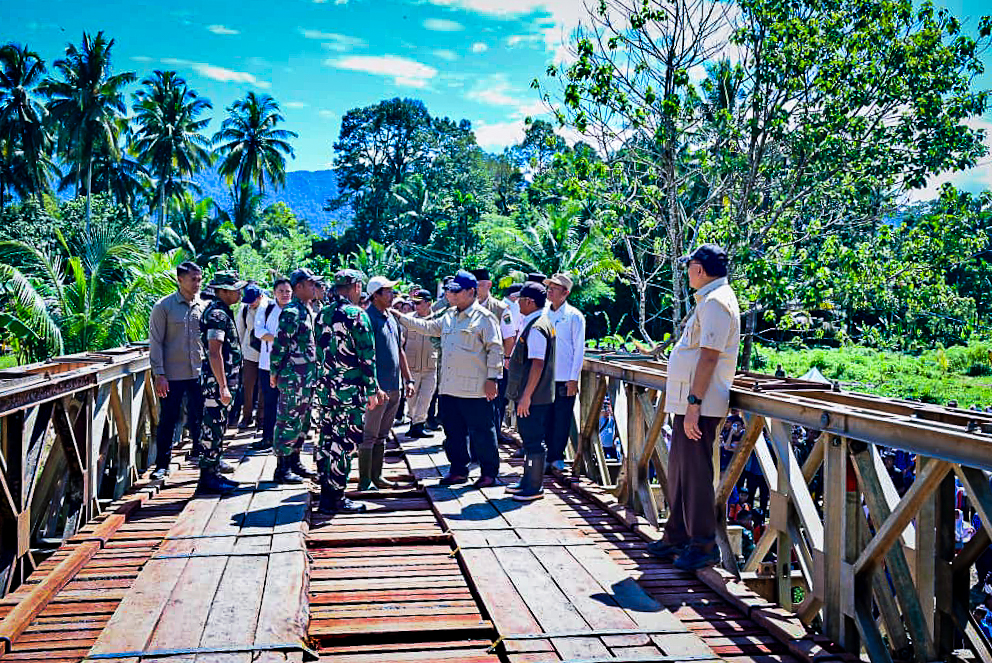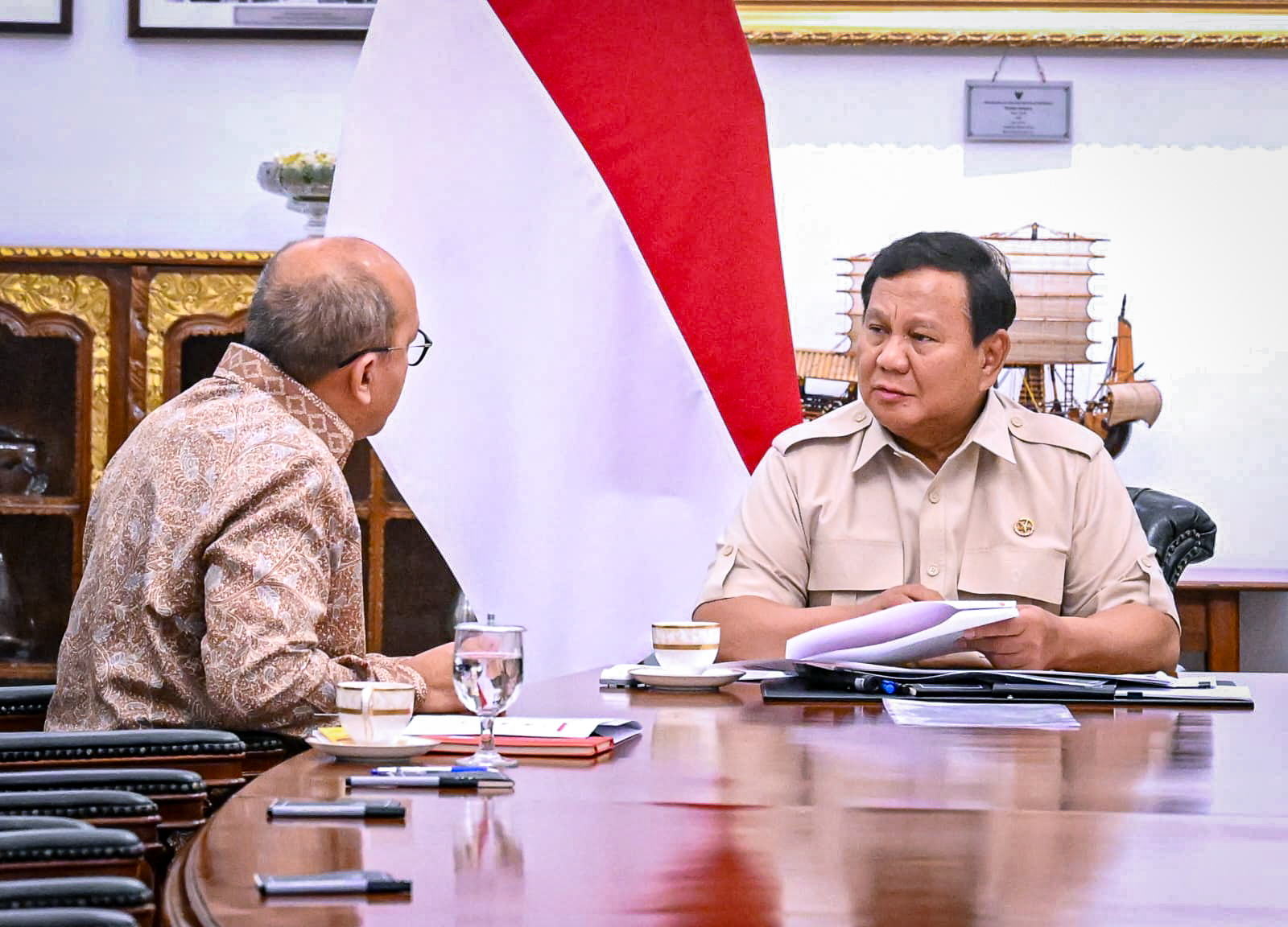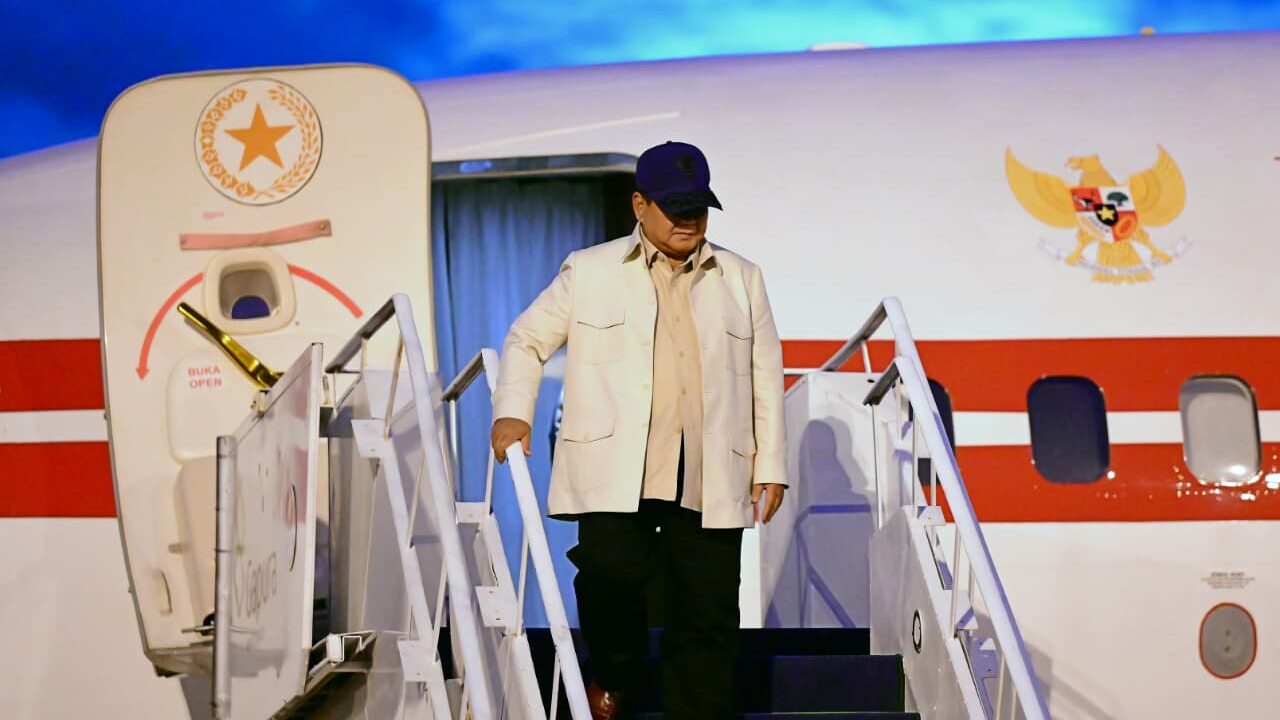Gov’t Eyes Economic Growth of Average 5.6% – 6.2% in 2020-2024

Minister of National Development Planning (PPN)/Head of the National Development Planning Agency (Bappenas) Suharso Monoarfa meets reporters after Plenary Cabinet Session on the Establishment of the 2020-2024 National Medium-Term Development Plan (RPJMN), Monday (6/1), at the State Palace, Jakarta. (Photo by: Jay/PR)
The Indonesian Government has set the target of economic growth at 5.6% – 6.2% in 2020-2024, Minister of National Development Planning (PPN)/Head of the National Development Planning Agency (Bappenas) Suharso Monoarfa has said.
“The figure set is for the average growth for the next five years. Starting in 2020, we expect a 5.3% growth. Then, the target will gradually increase. We expect the number to be above 6% by 2024,” Suharso told reporters at the Presidential Office, Jakarta, Monday (6/1).
The Government, according to the Minister, is also preparing measures to reduce the poverty rate from 9.41% to 7%.
Suharso went on to say that the Government expects the open unemployment rate can be reduced from 5.28% to 4.3% and the Gini ratio can be lowered from 0.382 to 0.374.
The Government sets to reduce greenhouse gas emissions by 27.3%. Also, the Human Development Index is expected to rise from 71.39 to 75.54.
Suharso stated that the 2020-2024 National Medium-Term Development Plan (RPJMN) was determined in such a way as to include all of the 392 President’s promises, his vision and mission, and the President’s directives during the inaugural address on 20 October 2019.
He mentioned seven development agendas included in the RPJMN, namely:
- economic resilience for quality and equitable growth;
- regional development to reduce inequality;
- qualified and competitive human resources;
- mental revolution and cultural development;
- infrastructure for the economy and basic services;
- environment, disaster resilience, and climate change; and
- stability of polhuhankam (politics, law, defense, and security) and transformation of public services.
According to the Minister, the approaches of the seven agendas are thematic, holistic, interconnected, connected, and spatial.
“All of the development agendas will be implemented in a region. So, the region is the basis of the development which will be handled by qualified and competitive human resources. The infrastructure development will be managed by paying attention to the environment and disaster vulnerability,” Suharso stated. (TGH/JAY/ES)
Translated by: Fairuzzamani Inayatillah
Reviewed by: M. Ersan Pamungkas








